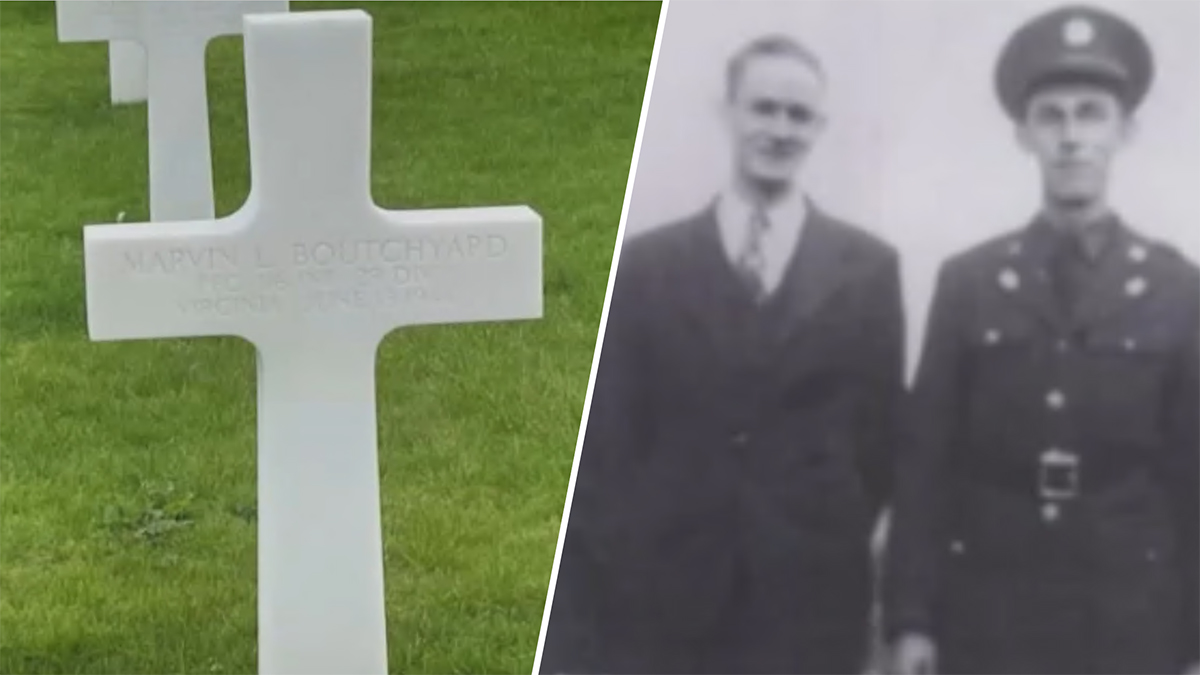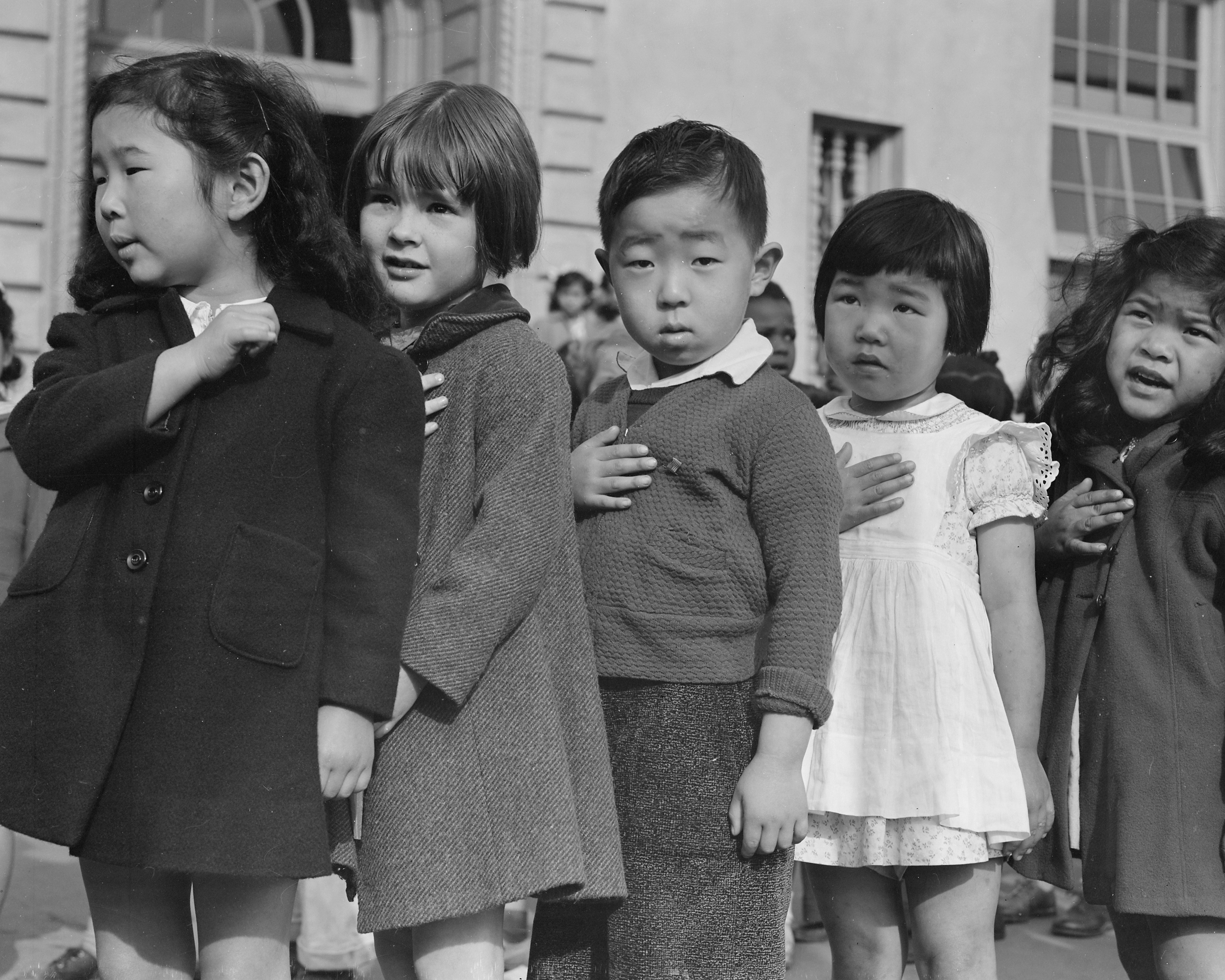
World War II veterans from the United States, Britain and Canada are in Normandy this week to mark 80 years since the D-Day landings that helped lead to Hitler’s defeat.
Few witnesses remain who remember the Allied assault. The Associated Press is speaking to veterans in France about their role in freeing Europe from the Nazis, and their messages for younger generations.
Papa Jake
“I am the luckiest man in the world,” D-Day veteran Jake Larson, a 101-year-old American best known on social media under the name “Papa Jake,” said as he arrived in Normandy this week. Papa Jake has more than 800,000 followers on TikTok.
We've got the news you need to know to start your day. Sign up for the First & 4Most morning newsletter — delivered to your inbox daily. Sign up here.
Born in Owatonna, Minnesota, Larson enlisted in the National Guard in 1938, lying about his age as he was only 15.
In 1941, his guard unit was transferred into federal service and he officially joined the Army. In January 1942, he was sent overseas and assembled the planning books for Operation Overlord.
He landed on Omaha Beach in 1944, where he ran under machine-gun fire and made it to the cliffs without being wounded.
After the landing, Larson remembers that he slept close to a comrade who had put his rifle by their side. “In the morning, when we got up, he picked up his rifle from my litter where I was going to sleep and it fell in two. A piece of shrapnel came down and hit the rifle and broke it in two,” he said.
“I’m lucky to be alive, more than lucky. I had planned D-Day. And everybody else that was in there with me is gone,’’ said Larson, who now lives in Lafayette, California.
“Here I am 101, without an ache or a pain in my body. How is that possible? Somebody up there likes me,” he said, pointing to the sky.
US & World
Floyd Blair
Floyd Blair, 103, served as a fighter pilot in the Army Air Corps. On June 6, 1944, he flew in two support missions across Omaha Beach as the Allied invasion began.
“I saw one of the saddest things I’ve ever seen. The color of the water changed,” he recalled Tuesday as he was paying tribute to fallen comrades at the American cemetery of Colleville-sur-Mer.
“Those poor guys on the ground deserve all the credit they can get. The paratroopers, the armored forces, the ground troops. They are the ones,” he said.
After D-Day, Blair participated in missions to support and protect Allied troops. His targets included German tanks, troop trains and other threats to the advancing troops and his radio was tied directly into the U.S. tanks on the ground.
Bob Gibson
“I’m living on borrowed time now,” Bob Gibson, 100, enthusiastically said when arriving at the Deauville airport in Normandy. “I want to see the beach again.”
Gibson was drafted into the Army in 1943 and was sent to Britain. On June 6, 1944, he and his unit landed on Utah Beach in the second wave.
“Terrible. Some of the young fellows never ever made it to the beach. It was so bad that we had to run over (them) to get on the beach. That’s how bad it was,” he said.
Gibson drove an M4 tractor with guns, engaging the enemy day and night. He continued to serve through Normandy and headed to Germany.
“You wake up at night every once in a while too. It seems somebody’s shooting at you. But we were glad to do it. That was our job, we had to do it, right?’’
Gibson, of Hampton, New Jersey, pondered the time that’s passed since then, and said this will probably be his last D-Day anniversary in Normandy.
Les Underwood
Les Underwood, 98, a Royal Navy gunner on a merchant ship that was delivering ammunition to the beaches, kept firing to protect the vessel even as he saw soldiers drown under the weight of their equipment after leaving their landing craft.
“I’ve cried many a time … sat on my own,’’ Underwood said as he visited Southwick House, on the south coast of England, the Allied headquarters in the lead-up to the Battle of Normandy. The event Monday, sponsored by Britain’s defense ministry, came before many of the veterans travel to France for international ceremonies commemorating D-Day.
“I used to get flashbacks. And in those days, there was no treatment. They just said, “Your service days are over. We don’t need you no more.’’’
In the News
George Chandler
George Chandler, 99, served aboard a British motor torpedo boat as part of a flotilla that escorted the U.S. Army assault on Omaha and Utah beaches. The history books don’t capture the horror of the battle, he said.
“Let me assure you, what you read in those silly books that have been written about D-Day are absolute crap,” Chandler said.
“It’s a very sad memory because I watched young American Rangers get shot, slaughtered. And they were young. I was 19 at the time. These kids were younger than me.”
Bernard Morgan
About 20 British veterans gathered on the deck of the Mont St. Michel ferry bound from England for northern France, as crowds gathered on the deck and along the shoreline to wave and cheer for them on their voyage to D-Day commemorations.
“It was more pleasant coming today than it was 80 years ago,’’ chuckled Royal Air Force veteran Bernard Morgan, who worked in communications on D-Day.
Kirka reported from Portsmouth, England and aboard







